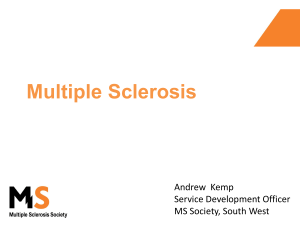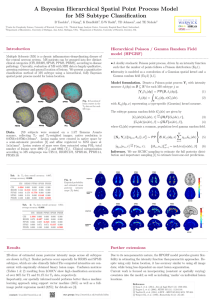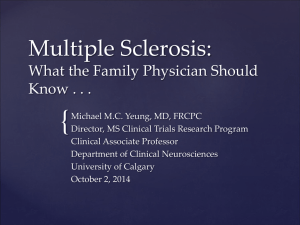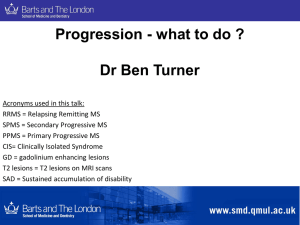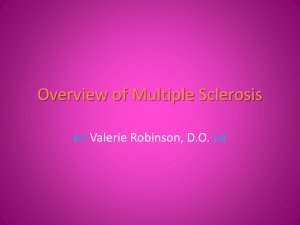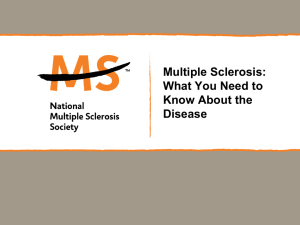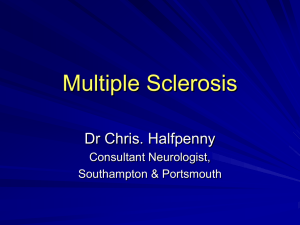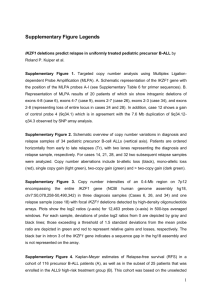Choices Types of MS - MS-UK
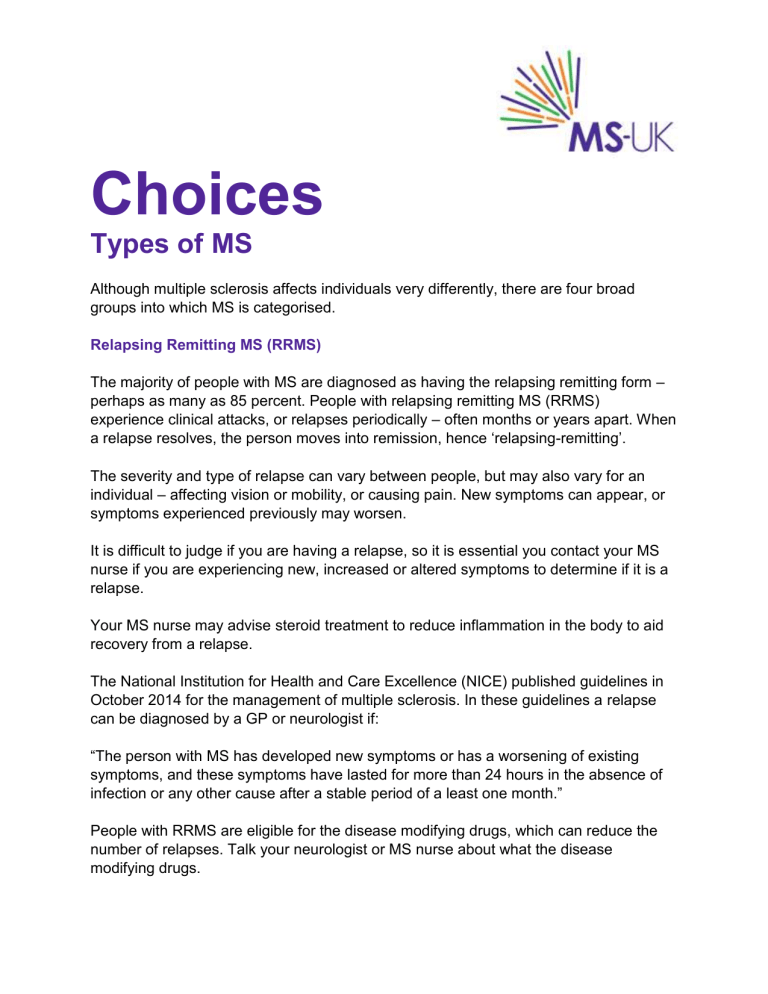
Choices
Types of MS
Although multiple sclerosis affects individuals very differently, there are four broad groups into which MS is categorised.
Relapsing Remitting MS (RRMS)
The majority of people with MS are diagnosed as having the relapsing remitting form
– perhaps as many as 85 percent. People with relapsing remitting MS (RRMS) experience clinical attacks, or relapses periodically – often months or years apart. When a relap se resolves, the person moves into remission, hence ‘relapsing-remitting’.
The severity and type of relapse can vary between people, but may also vary for an individual
– affecting vision or mobility, or causing pain. New symptoms can appear, or symptoms experienced previously may worsen.
It is difficult to judge if you are having a relapse, so it is essential you contact your MS nurse if you are experiencing new, increased or altered symptoms to determine if it is a relapse.
Your MS nurse may advise steroid treatment to reduce inflammation in the body to aid recovery from a relapse.
The National Institution for Health and Care Excellence (NICE) published guidelines in
October 2014 for the management of multiple sclerosis. In these guidelines a relapse can be diagnosed by a GP or neurologist if:
“The person with MS has developed new symptoms or has a worsening of existing symptoms, and these symptoms have lasted for more than 24 hours in the absence of infection or any other cause after a stable period of a least one month.”
People with RRMS are eligible for the disease modifying drugs, which can reduce the number of relapses. Talk your neurologist or MS nurse about what the disease modifying drugs.
For more information, see our Choices leaflet on Disease Modifying Treatments.
Rapidly Evolving Relapsing Remitting MS
Also called highly active or severe RRMS, rapidly evolving RRMS is categorised as having two disabling relapses in one year, as well as MS activity in the brain showing up as lesions in an MRI.
People with rapidly evolving RRMS may be eligible for treatment with the disease modifying drug – Tysabri. Talk to you neurologist or MS nurse about the disease modifying drugs you are eligible for.
For more information, see our Choices leaflets on Disease Modifying Treatments and
Tysabri.
Secondary Progressive MS
People who are initially diagnosed with relapsing remitting MS (RRMS) may then, in the future, transition to secondary progressive MS (SPMS).
Secondary progressive MS is characterised by fewer or no relapses and a gradual worsening of symptoms.
Some people with SPMS may still experience relapses, but remission following a relapse is less complete, or there is less time between relapses.
Only a neurologist can diagnose SPMS after careful observation of MS symptoms over time. A small number of people are diagnosed with SPMS from the outset, but this is because looking back it becomes apparent that the person has experienced MS relapses for a number of years prior to seeing a neurologist.
Around half of people with RRMS, will develop SPMS about ten to fifteen years after initial diagnosis. SPMS varies between individuals with some people experiencing a gradual worsening of symptoms, and others becoming more disabled more quickly.
There are many medications, complementary therapies and strategies to manage the symptoms of SPMS.
A few disease modifying treatments can be prescribed for SPMS, if you are
experiencing relapses. Talk to you neurologist or MS nurse about the disease modifying treatments you may be eligible for.
For more information, see our Choices leaflets on Disease Modifying Treatments,
Complementary Therapies, Drug Therapies and Diet & Nutrition.
Benign MS
Benign MS is a form of RRMS. Benign MS is used to describe a person’s experience of
RRMS after many years – it cannot be diagnosed with from the outset. A person will be initially diagnosed with RRMS and it is only after time – perhaps 10 to 15 years - that a neurologist may suggest that their MS is benign.
People diagnosed retrospectively with benign MS will have exhibited mild symptoms with infrequent relapses. After a relapse, there is complete recovery. People with benign
MS will have little or no disability after ten years after being initially diagnosed as
RRMS.
A person with benign MS can still experience relapses and symptoms, and their MS may change as they grow older.
Around 10 to 15 percent of people with RRMS will be diagnosed retrospectively with benign MS.
Primary Progressive MS
Around ten percent of people are diagnosed with primary progressive MS (PPMS).
PPMS begins with a slow progression of neurological symptoms.
Some people with PPMS experience a steady worsening of symptoms, and other people find they become disabled more quickly.
It can take many months or years for a neurologist to arrive at a definitive diagnosis of
PPMS as changes can be subtle over an extended time. MRI scans can prove inconclusive.
Most people with PPMS will not exhibit relapses, but a few do. If relapses are part of
PPMS, this is called progressive relapsing MS.
For more detailed information, see our Choices leaflets on Primary Progressive Multiple
Sclerosis, Disease Modifying Treatments, Complementary Therapies, and Diet &
Nutrition.
Clinically Isolated Syndrome
Clinically Isolated Syndrome (CIS) is used to describe the first neurologic episode that lasts at least 24 hours, and is caused by inflammation or demyelination in one or more sites in the central nervous system. CIS is often diagnosed before a formal diagnosis of
MS can be made. Around 80 percent of people with CIS will go onto develop MS within one to five years.
Those with CIS who show abnormalities on MRI scans within one year, may be offered treatment with a disease modifying drug.
For more information, see our Choices leaflet on Disease Modifying Treatments.
Updated December 2014
